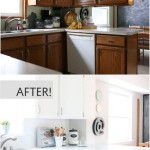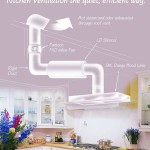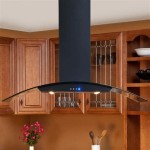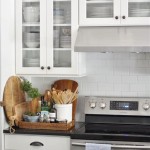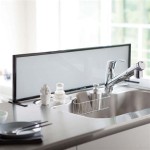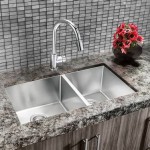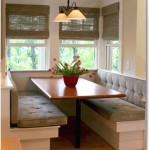Tile Backsplash Pictures for Kitchen Inspiration: A Comprehensive Guide
Kitchen backsplashes serve a dual purpose: providing a protective barrier against spills and splatters while simultaneously functioning as a key design element that enhances the aesthetic appeal of the kitchen. The selection of tile for a backsplash can significantly impact the overall style, from modern and minimalist to rustic and traditional. This article explores a diverse collection of tile backsplash pictures, offering insights into various design styles, tile materials, installation patterns, and color palettes to inspire homeowners and designers in creating their ideal kitchen space.
Exploring Different Tile Materials
The variety of tile materials available for kitchen backsplashes is expansive, each offering distinct characteristics in terms of durability, aesthetics, and maintenance. Understanding these differences is crucial for selecting the most suitable option for a particular kitchen environment and personal preferences.
Ceramic Tile: Ceramic tile remains a popular choice due to its affordability, versatility, and ease of maintenance. It is manufactured from clay and hardened by firing, resulting in a durable and water-resistant surface. Ceramic tiles are available in a wide range of colors, shapes, and sizes, allowing for endless design possibilities. They are also relatively easy to cut and install, making them a favorable option for DIY projects.
Porcelain Tile: Porcelain tile is a denser and more durable form of ceramic tile. It is fired at higher temperatures, resulting in a less porous material that is highly resistant to water absorption, staining, and scratching. Porcelain tiles are an excellent choice for high-traffic areas and kitchens where exposure to moisture is frequent. They can also mimic the appearance of natural stone, wood, or concrete, offering a wide range of aesthetic options with enhanced durability.
Glass Tile: Glass tile offers a sleek and modern aesthetic, adding a touch of elegance to any kitchen. Its reflective surface can enhance the brightness of the space and create a sense of spaciousness. Glass tiles are available in a variety of colors, shapes, and finishes, including clear, frosted, and iridescent options. While relatively durable, glass tiles can be prone to scratching and chipping and may require more careful handling during installation.
Natural Stone Tile: Natural stone tiles, such as marble, granite, travertine, and slate, offer a timeless and luxurious appeal. Each stone possesses unique variations in color, veining, and texture, adding character and depth to the backsplash. Natural stone tiles require sealing to protect them from staining and moisture absorption. The maintenance requirements and higher cost are considerations to weigh against their aesthetic benefits.
Metal Tile: Metal tiles, often made of stainless steel, copper, or brass, offer a modern and industrial aesthetic. They are particularly well-suited for contemporary kitchens and can add a touch of sophistication. Metal tiles are durable, easy to clean, and resistant to heat. They may require specialized cleaning products to maintain their shine and avoid tarnishing.
Examining Installation Patterns and Design Styles
Beyond the choice of tile material, the installation pattern significantly influences the overall look and feel of the kitchen backsplash. Different patterns can create visual interest, emphasize certain design elements, and complement the existing kitchen décor.
Subway Tile: The subway tile pattern is a classic and versatile choice, characterized by rectangular tiles laid horizontally in an offset or running bond pattern. It is a timeless option that works well in various kitchen styles, from traditional to modern. Subway tiles are available in a wide range of colors and sizes, allowing for customization and personalization.
Herringbone Pattern: The herringbone pattern features rectangular tiles laid in a zig-zag arrangement, resembling the bones of a herring. It adds a touch of sophistication and visual interest to the backsplash. The herringbone pattern can be more challenging to install than simpler patterns, requiring precise cuts and alignment.
Stacked Pattern: The stacked pattern involves arranging tiles in a straight, vertical or horizontal line without any offset. It creates a clean and modern look, particularly well-suited for minimalist kitchens. The stacked pattern is relatively easy to install and works well with both rectangular and square tiles.
Mosaic Tile: Mosaic tiles are small, typically square or rectangular, tiles arranged in a decorative pattern or design. They offer a high degree of customization and allow for intricate patterns and color combinations. Mosaic tiles are often used to create focal points or accent areas within the backsplash.
Geometric Patterns: Geometric patterns involve using tiles of different shapes and sizes to create complex designs. These patterns can add a contemporary and artistic touch to the kitchen. Examples include chevron, diamond, and arabesque patterns. Geometric patterns require careful planning and precise installation.
Traditional Kitchen Backsplash Designs: Traditional kitchen backsplash designs often incorporate classic elements such as subway tiles, natural stone tiles, and intricate mosaic patterns. Neutral color palettes, such as white, beige, and gray, are commonly used to create a timeless and elegant look. Decorative accents, such as pencil liners and chair rails, may also be incorporated.
Modern Kitchen Backsplash Designs: Modern kitchen backsplash designs often feature clean lines, minimalist patterns, and bold color choices. Glass tiles, metal tiles, and geometric patterns are commonly used to create a sleek and contemporary look. Monochromatic color schemes and contrasting grout colors can add visual interest.
Rustic Kitchen Backsplash Designs: Rustic kitchen backsplash designs often incorporate natural materials, such as stone and wood, to create a warm and inviting atmosphere. Distressed tiles, textured surfaces, and earthy color palettes are commonly used. Exposed brick and reclaimed wood can also be incorporated to add character and charm.
Considering Color Palettes and Grout Choices
The color palette of the backsplash significantly impacts the overall mood and aesthetic of the kitchen. The choice of grout color also plays a crucial role in defining the tile pattern and creating visual contrast or harmony.
Neutral Color Palettes: Neutral color palettes, such as white, gray, beige, and cream, are versatile and timeless choices for kitchen backsplashes. They create a clean and calming atmosphere and can easily complement various kitchen styles. Neutral colors also provide a blank canvas for adding pops of color through accessories and décor.
Bold Color Accents: Incorporating bold color accents into the backsplash can add personality and visual interest to the kitchen. Bright colors, such as blue, green, yellow, and red, can be used to create focal points or highlight specific design elements. Bold colors work well in modern and contemporary kitchens.
Monochromatic Color Schemes: Monochromatic color schemes involve using different shades and tones of a single color to create a cohesive and harmonious look. This approach can be used to create a sophisticated and elegant backsplash. For example, using varying shades of gray or blue can add depth and dimension to the space.
Contrasting Grout Colors: Contrasting grout colors can be used to emphasize the tile pattern and create visual interest. Dark grout colors, such as black or dark gray, can make the tile pattern stand out, while light grout colors, such as white or cream, can blend the tiles together for a more seamless look. The choice of grout color depends on the desired aesthetic and personal preferences.
Matching Grout Colors: Matching grout colors to the tile color can create a more subtle and uniform look. This approach is often used in minimalist kitchens or when the focus is on the texture and material of the tile rather than the pattern. Matching grout colors can also make the backsplash appear larger and more expansive.
Ultimately, selecting tile backsplashes requires careful consideration of material properties, installation patterns, and color palettes. Examining a wide range of tile backsplash pictures can provide valuable inspiration and guidance for creating a beautiful and functional kitchen space. Understanding the advantages and limitations of each material and pattern, along with a thoughtful approach to color selection, ensures the creation of a space reflecting individual style and practical requirements.

Unique Kitchen Backsplash Ideas 2024 An Effective Guide

65 Kitchen Backsplash Ideas For Every Design Style In 2025

Kitchen Backsplash Tile Designs That Are Envy Instilling Mir Mosaic

Backsplash Tile Diamond Kitchen And Bath

Five Kitchen Backsplash Tile Designs Reflecting Happy Chaos Of An N

5 Tile Designs To Inspire Your Kitchen Backsplash Jl Remodeling

What Size Tile For Kitchen Backsplash Finding The Right Fit

51 Modern Backsplash Ideas To Try In Your Kitchen Remodel Naperville Roofing Construction

7 Diy Kitchen Backsplash Ideas That Are Easy And Inexpensive Epicurious

Backsplash Tile Ideas For Your Kitchen Flooring America
Related Posts

